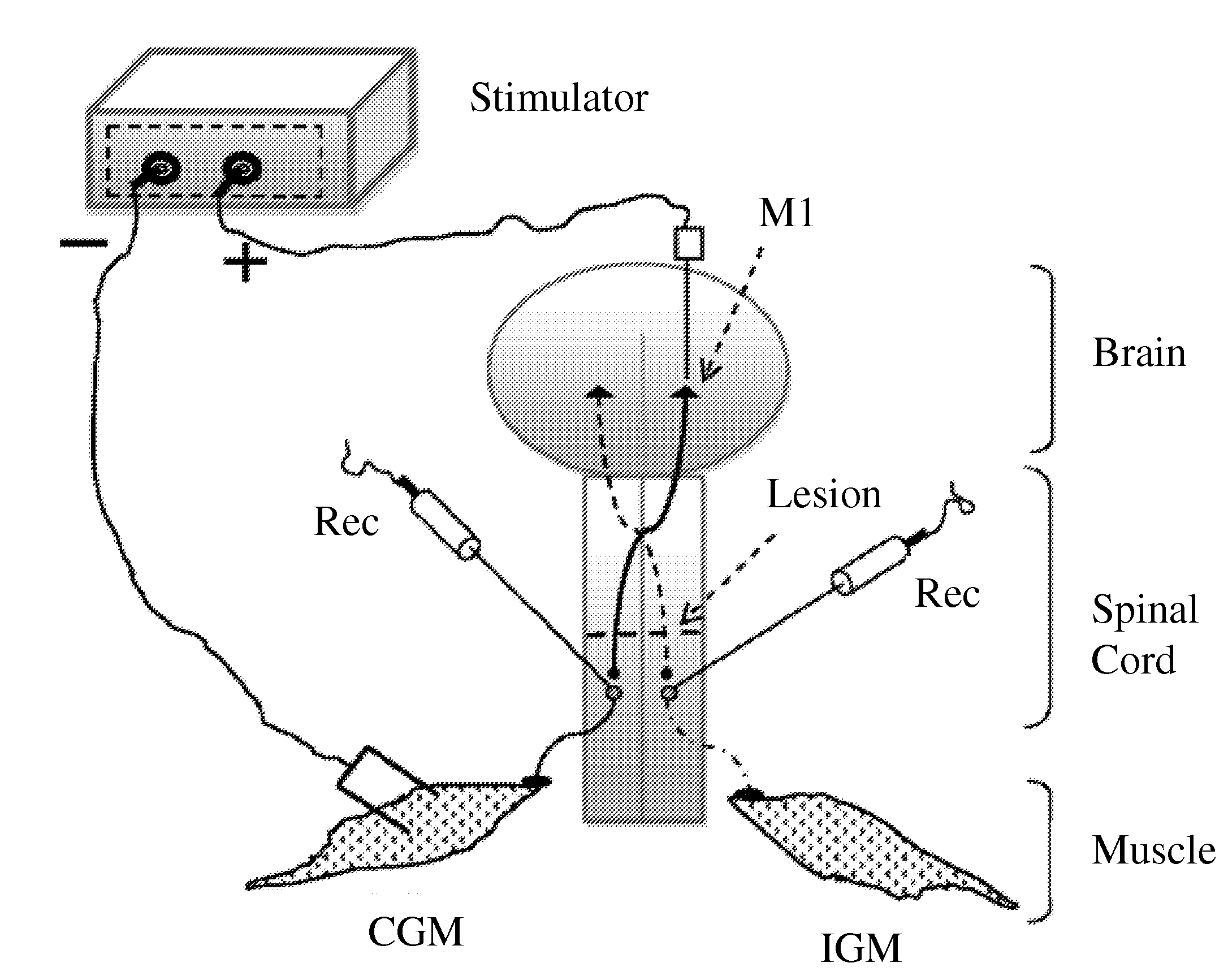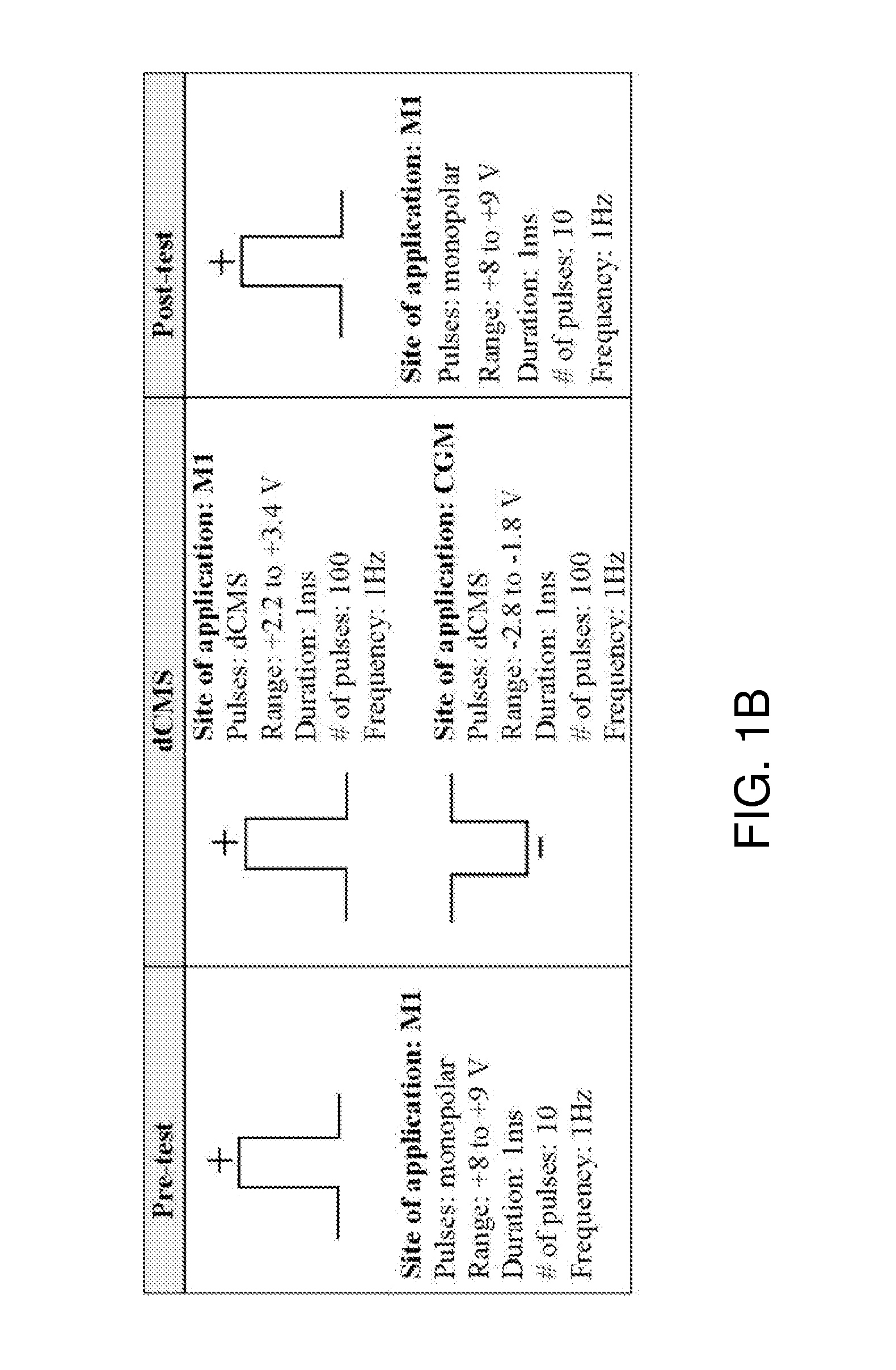Charge-enhanced neural electric stimulation system
a neural electric stimulation and neural technology, applied in the direction of artificial respiration, therapy, physical therapy, etc., can solve the problems of unsatisfactory connectivity and functional recovery of the impaired spinal cord, damage to the nervous system, and limited process, so as to stimulate the effectiveness of communication
- Summary
- Abstract
- Description
- Claims
- Application Information
AI Technical Summary
Benefits of technology
Problems solved by technology
Method used
Image
Examples
first embodiment
[0170]In a first embodiment, the first neutral component is a neuron located in a cortex and the second neural component is a lower motoneuron functionally related to the neuron in the cortex, i.e., the lower motoneuron is designed to actuate a muscle controlled by the neuron in the cortex in a normally functioning vertebrate being. A cortico-neuromuscular pathway for transmission of a neural signal exists between the first neural component and the second neural component in a normally functioning vertebrate being. In many cases, the cortico-neuromuscular pathway may run through a spinal cord. The neural communication impairment occurs in the cortico-neuromuscular pathway in this case. Thus, the neural communication impairment point may be present in the spinal cord or within the portion of the cortico-neuromuscular pathway located in one of the limbs of the vertebrate being.
second embodiment
[0171]In a second embodiment, the first neural component is a first neuron located in a first portion of a cortex and the second neural component is a second neuron located in a second portion of the same cortex or in a portion of a different cortex. For example, it has been recently known that individuals with autistic spectrum disorder have reduced level of neural interconnection between the frontal lobe (forebrain) and parietal lobe (posterior brain) compared with normal individuals. The low level of neural interconnection between the frontal lobe (forebrain) and parietal lobe in this case is neural communication impairment. Ab initio neural communication impairment accompanies many types of autistic spectrum disorder, and in the case of Rhett syndrome, the impairment can be genetic post-birth neural communication impairment. In this case, the neural communication impairment point can be the interface between the frontal lobe and the parietal lobe at which additional neural conne...
third embodiment
[0172]In a third embodiment, the first neural component is a sensory neuron located in a sensory component of a vertebrate being and the second neural component is a receptor neuron located in a cortex of the vertebrate being. The sensory neuron may be a neuron designed to detect vision, hearing, temperature, pressure, taste, smell, movement or actuation of a body muscle, or any other sensory function that a normal vertebrate being has the capacity for. The neuron communication impairment can be, for example, cortical blindness which occurs at optical nerves located between the retina and the visual cortex. In this case, the first neural component is one of the light-sensitive cells in the retina, the second neural component is the neuron in the visual cortex that is functionally related to the light-sensitive cells, and the neural communication pathway is the neural connection between the light-sensitive cell and the functionally related neuron in the visual cortex. The neural comm...
PUM
 Login to View More
Login to View More Abstract
Description
Claims
Application Information
 Login to View More
Login to View More - R&D
- Intellectual Property
- Life Sciences
- Materials
- Tech Scout
- Unparalleled Data Quality
- Higher Quality Content
- 60% Fewer Hallucinations
Browse by: Latest US Patents, China's latest patents, Technical Efficacy Thesaurus, Application Domain, Technology Topic, Popular Technical Reports.
© 2025 PatSnap. All rights reserved.Legal|Privacy policy|Modern Slavery Act Transparency Statement|Sitemap|About US| Contact US: help@patsnap.com



